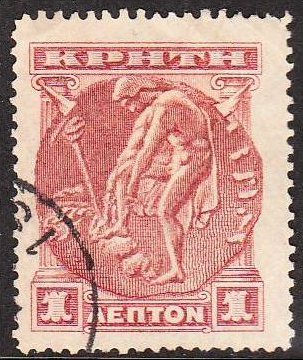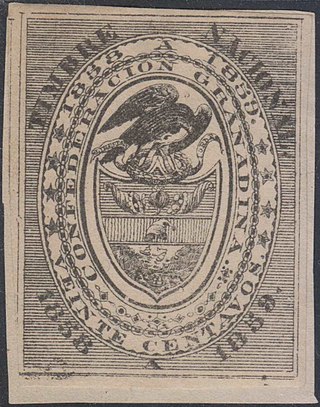

Guatemala has been independent from Spain since 1847. The first adhesive stamps of Guatemala were revenue stamps issued in 1868. [1] [2] The first postage stamps were produced in 1871. [3]


Guatemala has been independent from Spain since 1847. The first adhesive stamps of Guatemala were revenue stamps issued in 1868. [1] [2] The first postage stamps were produced in 1871. [3]

Philately is the study of postage stamps and postal history. It also refers to the collection and appreciation of stamps and other philatelic products. While closely associated with stamp collecting and the study of postage, it is possible to be a philatelist without owning any stamps. For instance, the stamps being studied may be very rare or reside only in museums.

Stamp collecting is the collecting of postage stamps and related objects. It is an area of philately, which is the study of stamps. It has been one of the world's most popular hobbies since the late nineteenth century with the rapid growth of the postal service, as a stream of new stamps was produced by countries that sought to advertise their distinctiveness through their stamps.

Indian postal systems for efficient military and governmental communications had developed long before the arrival of Europeans. When the Portuguese, Dutch, French, Danish and British conquered the Marathas who had already defeated the Mughals, their postal systems existed alongside those of many somewhat independent states. The British East India Company gradually annexed the other powers on the sub-continent and brought into existence a British administrative system over most of modern-day India, with a need to establish and maintain both official and commercial mail systems.

A revenue stamp, tax stamp, duty stamp or fiscal stamp is a (usually) adhesive label used to designate collected taxes or fees on documents, tobacco, alcoholic drinks, drugs and medicines, playing cards, hunting licenses, firearm registration, and many other things. Typically, businesses purchase the stamps from the government, and attach them to taxed items as part of putting the items on sale, or in the case of documents, as part of filling out the form.

Telegraph stamps are stamps intended solely for the prepayment of telegraph fees. The customer completed a telegraph form before handing it with payment to the clerk who applied a telegraph stamp and cancelled it to show that payment had been made. If the stamp was an imprinted stamp, it formed part of the message form.

The Tuvan People's Republic issued postage stamps between 1926 and 1936. They were popular with stamp collectors in the Western world in the mid-twentieth century because of the obscurity and exoticism of Tannu Tuva and the stamps' quirky, colorful designs. The validity of many stamps purportedly issued by Tannu Tuva has been questioned by philatelists.

Walter Morley (1863–1936) was a pioneering English philatelist, stamp dealer and philatelic author.

Colombia is a country in north-western South America. Colombia is bordered by Venezuela, Brazil, Ecuador, Peru, Panama and the Caribbean Sea and the Pacific Ocean. With a population of over 45 million people, Colombia has the second largest population in South America, after Brazil. The capital is Bogotá.

A meter stamp, or meter mark, is the impression made by a postage meter machine that indicates that postage has been paid on a letter or parcel. Meter stamps are widely used by businesses and organisations as they are more efficient than using postage stamps.

Key type stamps are stamps of a uniform design that were widely used by colonial territories in the 19th and 20th centuries.

This is a survey of the postage stamps and postal history of Venezuela.

This is a survey of the postage stamps and postal history of Crete.

The first revenue stamp of Colombia was issued on 1 September 1858, one year before the first Colombian postage stamp.
Lionel William Fulcher B.Sc. was a British philatelist who co-edited, with Stanley Phillips, Gibbons Stamp Monthly, was Vice President of the International Philatelic Union and was a key figure in the Fiscal Philatelic Society. He was an expert on the early stamps of Japan and also studied Venezuela, Peru, Nicaragua, Papal States and Norway.

Argentina has been one of the most prolific issuers of revenue stamps. Stamps have been issued by both the Argentine Republic and individual Argentine provinces and covered a wide range of duties from taxes on documents to hat taxes. The stamps form one of the most complex studies in revenue philately and have been exhaustively catalogued by Clive Ackerman in six volumes. However, new discoveries continue to be made.

Bolivia has issued revenue stamps since 1867.

The first postal service took place using mail sent with captains of packet ships, using agents in the England and in the islands for the end delivery. The cost was normally 3d. The first pillar boxes in Britain were introduced in the Channel Islands as an experiment in 1852, to collect mail for the Royal Mail packet boats. The oldest pillar box in use in the British Isles is in Guernsey.

Uruguay has issued revenue stamps since 1871. Uses have included documentary taxes, consular services and tobacco and alcohol duties.

The Halfpenny Yellow is the first postage stamp issued by the Crown Colony of Malta. Depicting Queen Victoria, it was only valid for local postage and it was originally issued on 1 December 1860. It was the only stamp issued by Malta for two and a half decades, and during this period various reprints were made with differences in colour shade, perforation and watermark. When control of Malta's postal service was transferred to the island's colonial government on 1 January 1885, the stamp was withdrawn and it was replaced by a set of definitive stamps.

The first adhesive revenue stamps of Guatemala were issued in 1868 and preceded the first postage stamps of that country by three years.